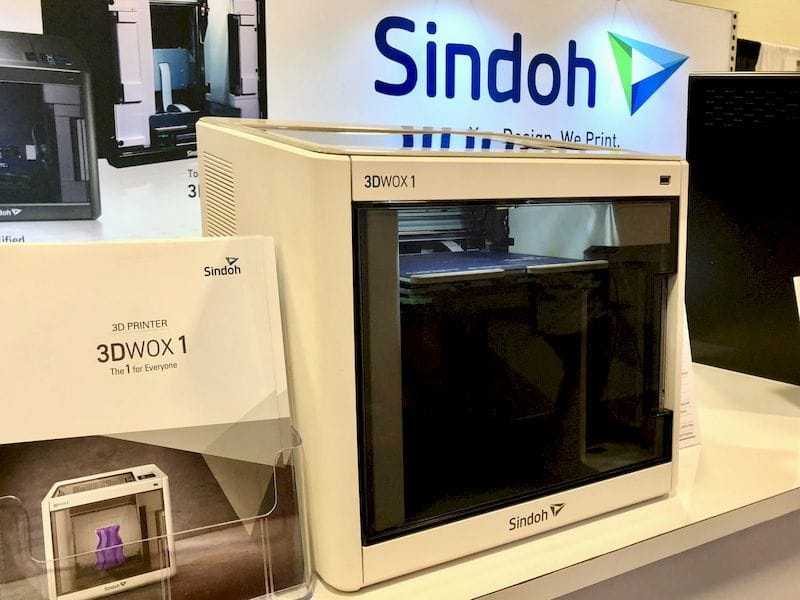
We had a chat with the friendly folks from Sindoh last week and found out they are about to make some very interesting changes.
We’ve been using their equipment for a couple of years now and have been constantly impressed with the print quality and ease of use of their systems. One of our comrades has been using his DP200 for years now, pushing almost 100 cartridges of filament through it with virtually no failures.
But no company can stand still, and that’s the case with Sindoh.
The first change is their new machine, the 3DWOX 1, an improved entry-level desktop 3D printer. This is a machine clearly based on their highly successful DP200 platform, but includes a couple of different features.
The main change is the print bed is now a removable spring steel plate, coated with their highly capable adhesive surface. This enables very easy removal of prints: just twist the plate and most prints pop off. Similarly, machine turnaround is faster if you use two plates, and swap a fresh one in the instant a print completes.
They seem to have abandoned their experiment with a flexible (almost floppy) removable print surface on their DP201 3D printer in favor of the spring steel approach used on the 3DWOX 1. I’m not surprised as this approach is being increasingly used by many other 3D printer manufacturers.
The 3DWOX 1 includes an air filtration system with a HEPA filter, and new motors are used to significantly reduce the noise generated during operations. If found this move surprising, because the DP200 is a ridiculously quiet machine already, but the 3DWOX 1 is likely even quieter.
One reason for these changes is perhaps to make the 3DWOX 1 more amenable for use in educational settings: avoid unpleasant odors, and keep the printing noise down during lengthy jobs while students work quietly on other projects.
The 3DWOX 1 is said to be available now at a price of USD$1,499.
The other big news concerns materials.
While the 3DWOX systems produce incredible results, it required use of proprietary materials. In other words, the machines were only able to use chipped cartridges from Sindoh. To their credit, Sindoh did not charge high prices for their materials; pricing was maintained at levels similar to third party materials.
However, because of the proprietary nature it was somewhat harder to find and use the cartridges, particularly if you are located in regions not served by their Amazon outlet. You could not simply order Sindoh cartridges from your favorite local filament reseller, and almost certainly would not find them in a physical store nearby.
But that could change.
Sindoh informed us that they intend on releasing a firmware change to their popular dual-extrusion 2X machine that will enable use of open materials! This means users will be able to order any physically compatible third party filament and use it in their Sindoh 2X machines.
Of course, Sindoh controls the cartridges and ensures the machine’s print parameters exactly match that material. Thus when using third party material it would be expected that users must do some level of parameter tuning to achieve optimum results. Or you can continue buying Sindoh cartridges if that’s not for you. You get the best of both worlds.
While the announcement of the firmware update was directed at the 2X model, I have a suspicion they may also enable this feature on other machines, possibly even including the very popular DP 200 model.
Via Sindoh

